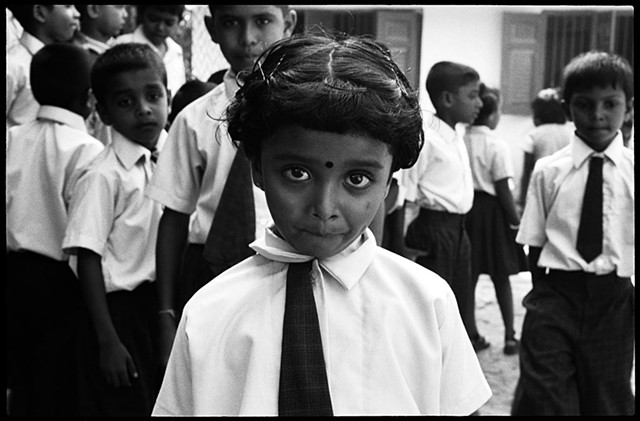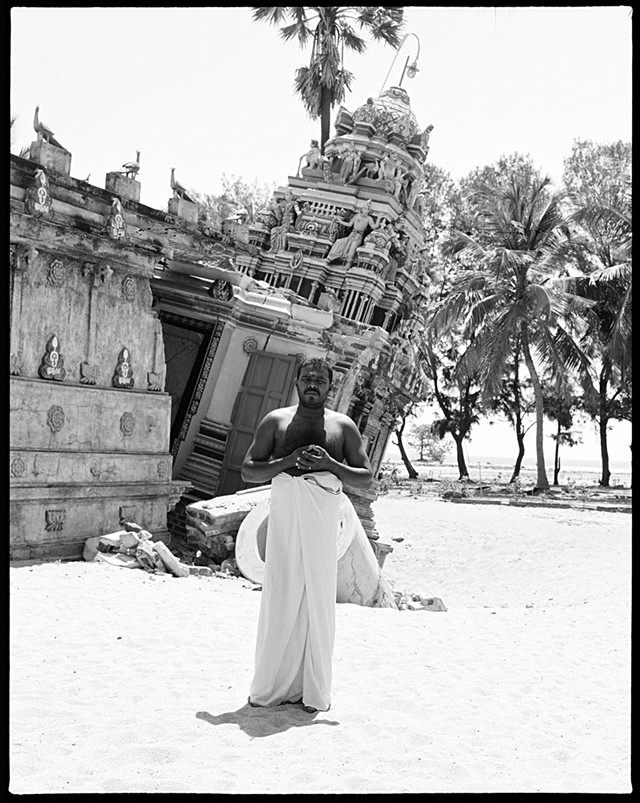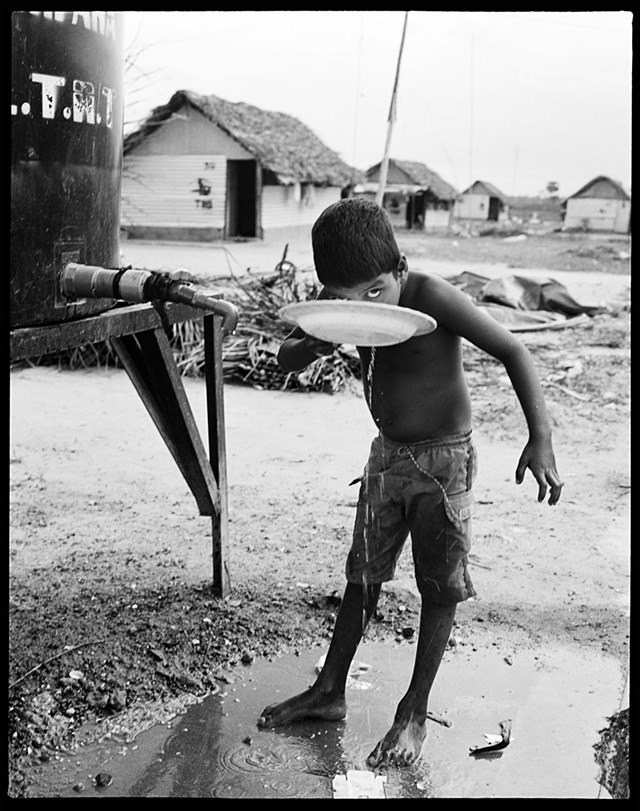
- Courtesy
- "School Girl"
In "A World Away," on view at the Middlebury College Museum of Art, visitors can see a slice of history from 12 years and 8,500 miles away, told in the faces of people who lived it.
When Austin, Texas, photographer Hunter Barnes headed to Sri Lanka in 2006, he intended to document the island nation's recovery from the 2004 tsunami. Instead, he found himself in the middle of a rapidly escalating conflict, days after the breakdown of a ceasefire in the country's decades-long civil war.
The photographs Barnes came away with after a month in what was then called the North Eastern Province offer glimpses into the resiliency of the people who lived there during an incredibly difficult time.

- Courtesy
- "Fallen Temple"
Many of the photos were shot in Tamil rehabilitation camps, to which very few outsiders had access. "The people in these villages were actually really happy to have me there," Barnes said during his artist's talk, "because they wanted their story to be told — they wanted it to be seen. There was nobody there doing it." Working with an aid organization installing wells, Barnes took photos as an artist rather than as a journalist and faced fewer restrictions.
The exhibition pairs the portraits with excerpts from Barnes' notebook, lettered directly onto the wall. Full texts and photos are also collected in a catalog. The entire series is a first-of-its-kind donation of artwork to the museum from the Endeavor Foundation, a longtime Middlebury supporter, and is meant to help students learn about photography as well as Southeast Asian politics and culture.
Barnes' subjects define the tone of the pictures through vivid expressions and body language. Some, such as the boy grinning in a classroom piled with broken furniture in "Education," seem thrilled to take part. Others, including two older women filling buckets with water in "Poverty," not so much.
In general, Barnes said, he was well received and people were incredibly generous, though they were living in intense poverty and still mourning thousands lost to the tsunami. Many had been displaced from their homes by Sinhalese government forces.

- Courtesy
- "Water Rights"
Barnes represents some of their challenges directly. In "Water Rights," a boy next to a water tank drinks from a plastic plate. Most of the area's water supplies had been contaminated by the tsunami, and the military was limiting water deliveries as a control tactic. The boy looks directly at the viewer, without raising his face from the plate.
Notes give context for other photos. Text beside four photographs of uniformed children at a school for orphans reads, "Only 200 of 700 children made it to school that day because of a military outbreak on the street."

- Courtesy
- "A New Road to Tsunami Recovery"
Many of Barnes' prints depict children, who wear expressions from giggly to wary to curious. People there took education seriously, Barnes said, because "the only out for their kids, the only hope that there was, was through education."
One portrait in the exhibition looms larger than any other: a single photograph of a Special Task Force soldier, printed at 4 by 5 feet. To photograph a soldier was dangerous. Barnes described his caution in asking and his excitement at getting the shot. He was confused when the soldier's approachable manner completely changed: Barnes had accidentally said "Thank you" in Tamil, rather than Sinhalese. Despite his mistake, Barnes said it was important to show the military's constant presence: "There was always that shadow. You could feel that tension."
During Barnes' trip, many locals left, fearing war even more than another tsunami. One exception was a man who would not leave a damaged temple, where he poses in his portrait. Barnes stressed the importance of listening to people's stories before taking their photos. "They'll tell you where they're supposed to be," he said.










Comments
Comments are closed.
From 2014-2020, Seven Days allowed readers to comment on all stories posted on our website. While we've appreciated the suggestions and insights, right now Seven Days is prioritizing our core mission — producing high-quality, responsible local journalism — over moderating online debates between readers.
To criticize, correct or praise our reporting, please send us a letter to the editor or send us a tip. We’ll check it out and report the results.
Online comments may return when we have better tech tools for managing them. Thanks for reading.